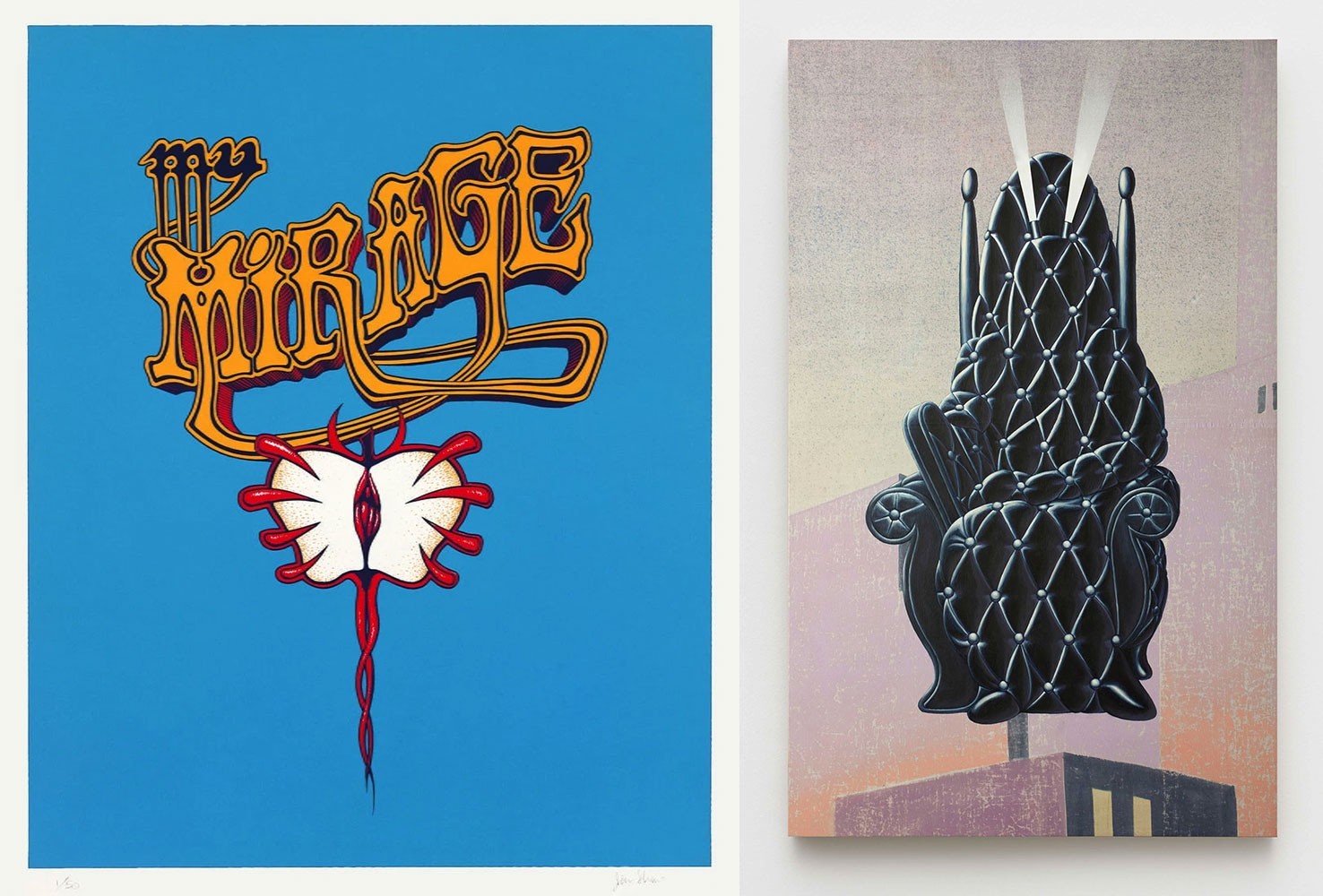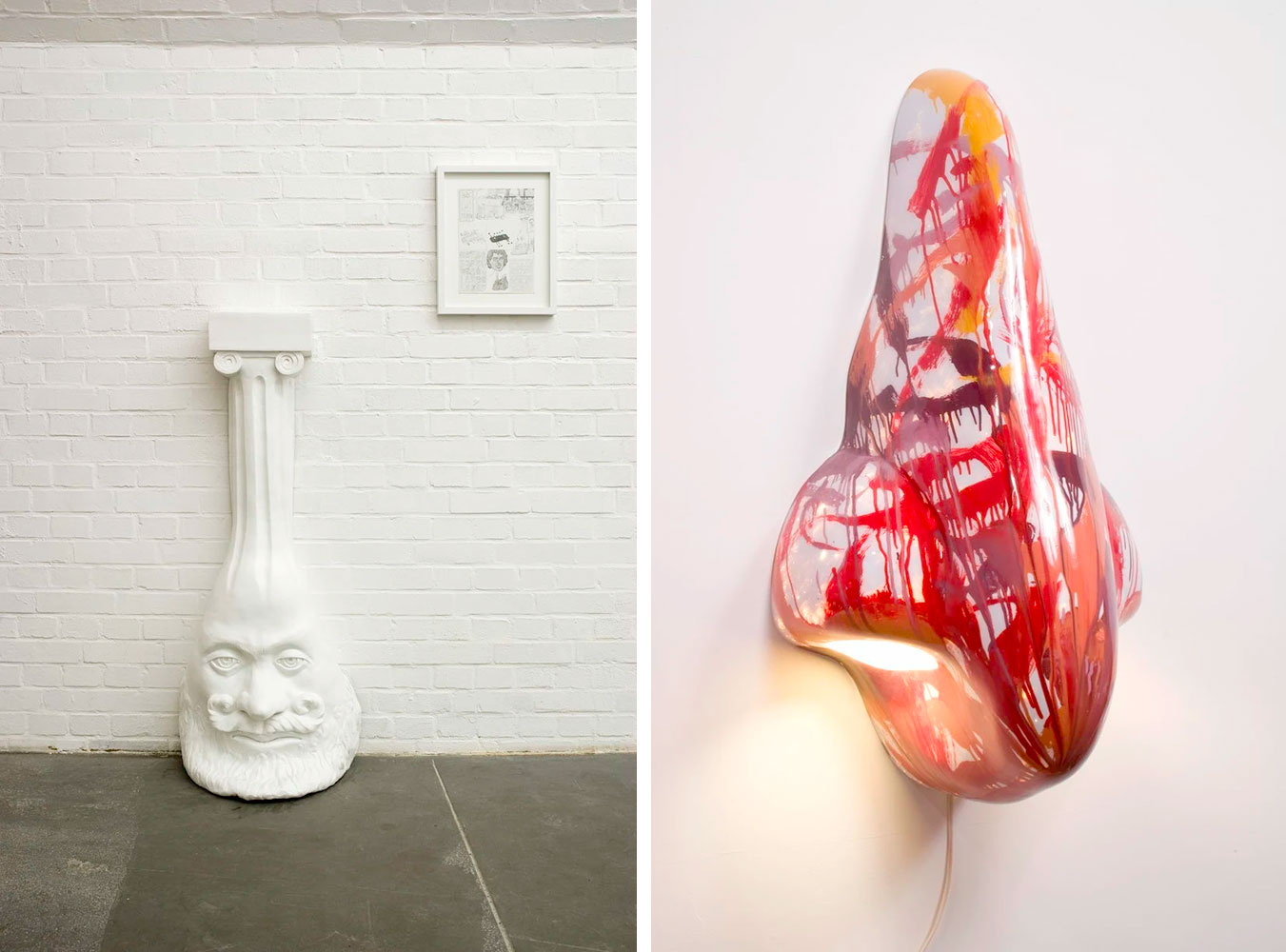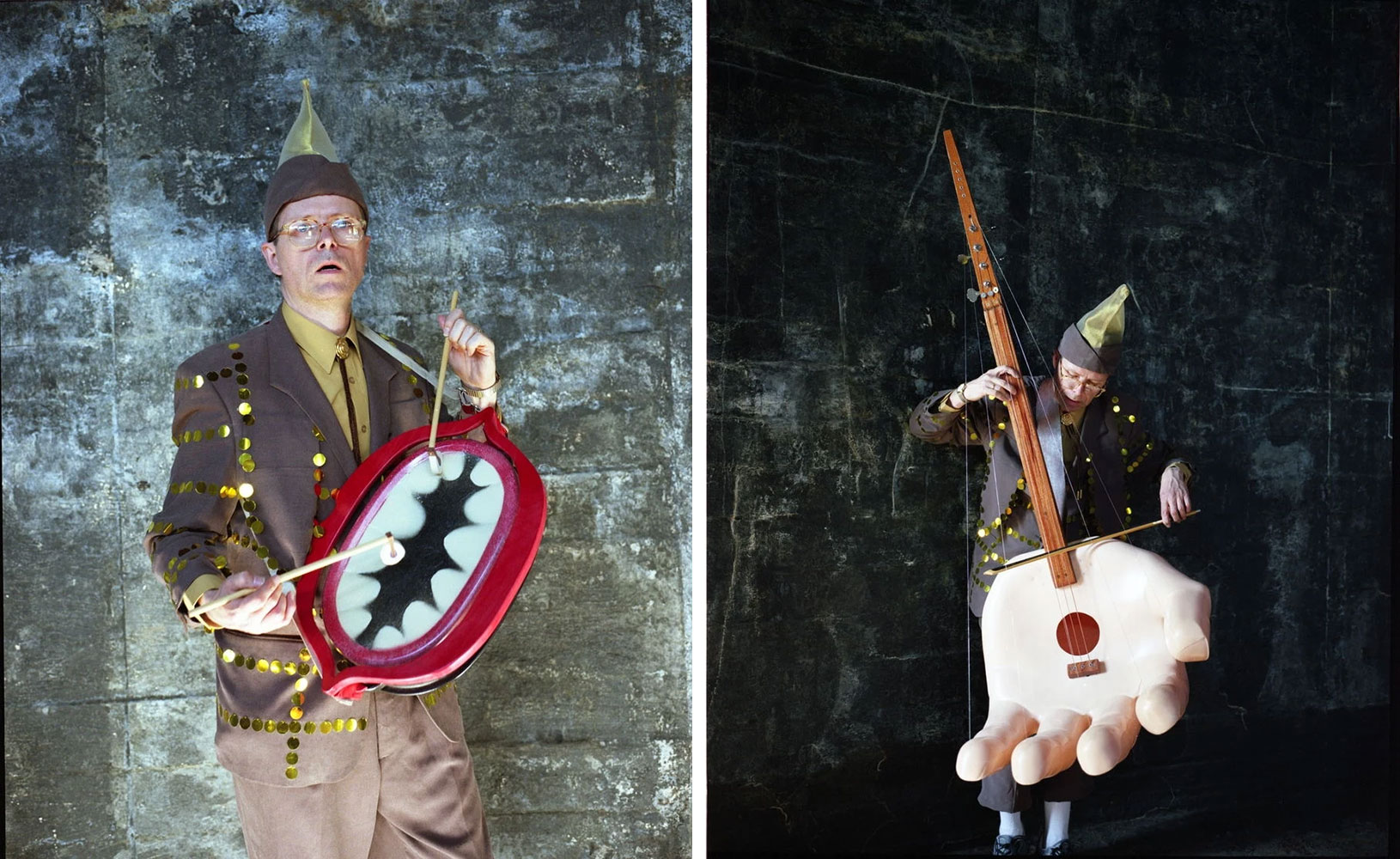ART CITIES: Paris-Jim Shaw
 The practice of Jim Shaw spans a wide range of artistic media and visual imagery. Since the 1970s, Shaw has mined the detritus of American culture, finding inspiration for his artworks in comic books, pulp novels, rock albums, protest posters, thrift store paintings and advertisement. At the same time, Shaw has consistently turned to his own life and, in particular, his unconscious, as a source of artistic creativity.
The practice of Jim Shaw spans a wide range of artistic media and visual imagery. Since the 1970s, Shaw has mined the detritus of American culture, finding inspiration for his artworks in comic books, pulp novels, rock albums, protest posters, thrift store paintings and advertisement. At the same time, Shaw has consistently turned to his own life and, in particular, his unconscious, as a source of artistic creativity.
By Efi Michalarou
Photo: Praz-Delavallade Gallery Archive
Jim Shaw is an iconic figure on the Californian art scene who shares with his contemporaries, Mike Kelley and Paul McCarthy, the same desire to produce art that explores American society. The retrospective exhibition “Unknown Monsters”, with works from different series produced between 1975 and 2023 is part of the tribute paid by Praz-Delavallade to this immense artist in celebration of their 26-year-long partnership. In 1973, Shaw and Kelley founded the influential punk rock band Destroy all Monsters with the idea of producing a form of art that would delve into the schizophrenic side of a society they saw as conformist, standardised and even in a state of decline. From early on, the works of Jim Shaw aggregated a wide variety of inspirations, from moments of his own life to fragments of a shared cultural history. If many of them seem to be the product of hallucinations fashioned in the world of dreams, they are nevertheless unconnected to the tradition of surrealism in Europe. Some of his more recent works feature swarms of grotesque nefarious figures that evoke the history of America, a country that is a victim of its own excesses. In no particular order, we discover references to everyday events including a sick Uncle Sam poisoned by the devils in the Kremlin, Nixon’s dog Checkers and Brett Kavanaugh, the judge who was accused of rape before being appointed to the Supreme Court by Trump. Shaw lays out for all to see the turpitude of the political class and the damage caused by the greed of the CEOs of certain large multinationals. And yet, although these works are in a resolutely satirical vein and caustic to say the least, Shaw cannot be considered a political artist. This is not agitprop, i.e. ideological art created to condition the masses. Shaw’s historical references are more anachronistic. In fact, they are closer to the form of history painting that was still practiced at the end of the 19th century and which combined the discursive tools of critical rationalism and allegorical images. Another reference that is older still are the arcane nightmarish visions of Hieronymus Bosch, whose intentions more than five hundred years later are still the subject of the wildest speculations. Although a large number of people viewing Shaw’s art are unaware of these references, the latter are nevertheless informed by something that is, by its very definition, widely accessible: pop culture. As such, Shaw is addressing what is a key issue for his generation by contributing to a critique of the status of the artist and, as a result, denying works of art their special aura. Faced with the profusion of images that he himself creates or collects (for example his Thrift Store paintings), the spectator is placed in the awkward position of having to judge in terms of ideology. More often than not, new works contribute to existing series, such as “My Mirage” (1986-1991), which is a vast, fictional biography of a character called Billy that counts almost 170 individual creations. Since 1992, Shaw has also been recording his dreams in the form of drawings (Dream Drawings) and manifesting their content in the form of sculptures (Dream Objects). His ensemble Thrift Store is a living work of art that Shaw adds to regularly each time he finds a suitable painting in a second-hand shop. Other series include the iconic “Destroyed Faces” and the ex nihilo creation of a pseudo-religion called “Oism” that was born in his imagination and for which, as its Grand Master, he defines the rites. Through this religion, he looks back at the roots of North American thought by means of a multitude of installations, paintings, videos and drawings that purport to portray and describe it. In short, this is a major endeavour in which, by recycling diverse elements in a spirit of anarchy, Shaw gives form to the obsessions, neuroses and shared values of post-war America. In so doing, he continues to expose the failings and deviances of this culture, not only through explicit criticism, but also by portraying it in a variety of nightmarish situations. Profoundly erudite and equally anti-authoritarian, the art of Jim Shaw is the fruit of a process of improvisation of which he is the sole master. For more than 50 years, his works have continued to embody their own, unique and strange form of beauty.
Photo: Jim Shaw, Dream Object (“College kids were reminiscing about their innocent days before smoking pot. They had a pile of stuff they needed to hide from a cop on top of a hill. A kid watched from a car below & when the narc showed they held a giant octopus tarot card to block the the cops view.”) – Dream Drawing (”Using a computer you could visualize sounds.“), 2015, Ink and airbrush on paper / graphite on paper. Dream Object: 20 x 12 in, 50.8 x 30.48 cm, Dream Drawing: 12 1/8 x 8 5/8, 30.5 x 22 cm, © Jim Shaw, Courtesy the artist and Praz-Delavallade Gallery
Info: Praz-Delavallade Gallery, 5 rue des Haudriettes, Paris, France, Duration: 24/2-13/4/2024, Days & Hours: Tue-Sat 10:00-18:00, www.praz-delavallade.com/



Right: Jim Shaw, The Seat of the Law, 2019, Acrylic on muslin, 60 x 37 x 1.75 in, 152.4 x 94 x 4.4 cm, © Jim Shaw, Courtesy the artist and Praz-Delavallade Gallery

Right: Jim Shaw, Nose sculpture wall sconce (AbEx 6), 2007, Mixed media, light & cord, 38 x 20 x 16 in, 96.52 x 50.8 x 40.64 cm, © Jim Shaw, Courtesy the artist and Praz-Delavallade Gallery

Right: Jim Shaw, The Music Of The Degrees, 2002, Color photograph mounted on aluminium, 59 1/16 x 47 1/4 in / 60 13/16 x 49 1/32 in (framed), 150 x 120 cm / 154.5 x 124.5 cm (framed), Edition 1 of 3, plus 2 AP, © Jim Shaw, Courtesy the artist and Praz-Delavallade Gallery




Right: Jim Shaw, Untitled (Distorted Faces series: Clint Eastwood), 1980, graphite, airbrush and prismacolor on paper, 13 3/4 x 10 1/2 in / 19 5/8 x 16 1/2 x 1 1/8 in (Framed :), 34.9 x 26.6 cm / 49.8 x 41.9 x 2.9 cm (framed) , © Jim Shaw, Courtesy the artist and Praz-Delavallade Gallery
